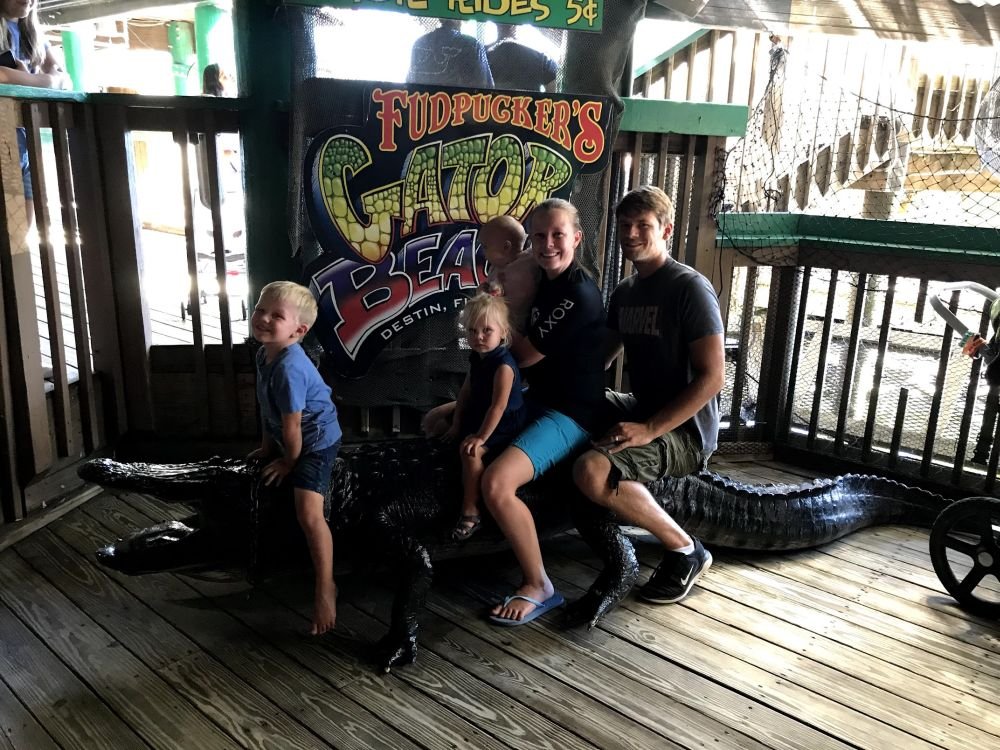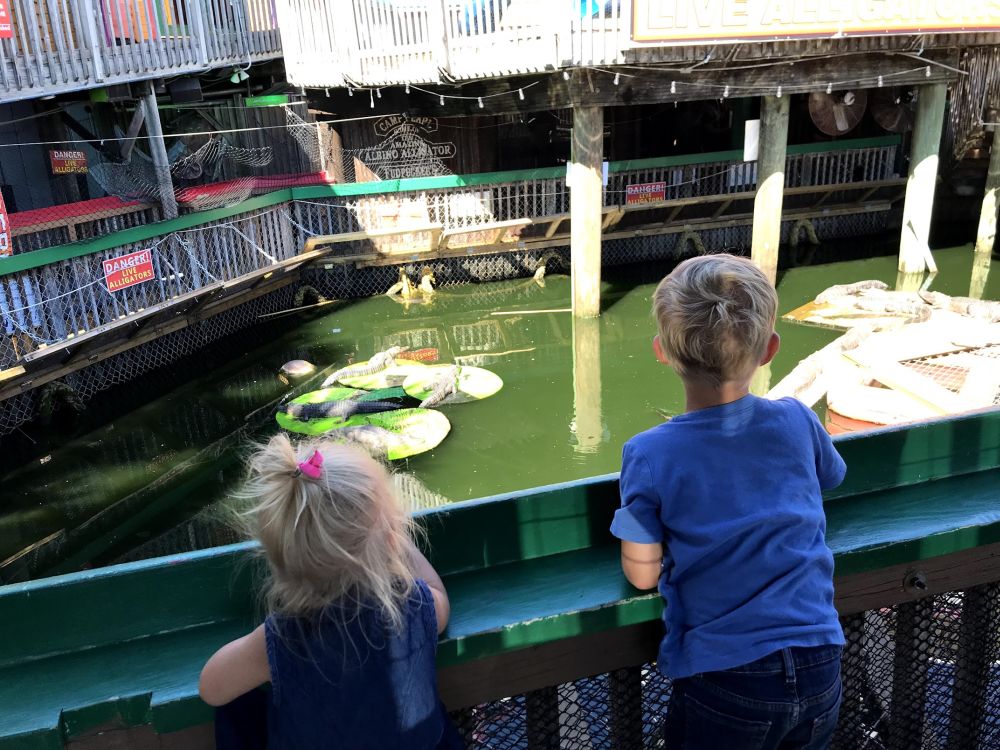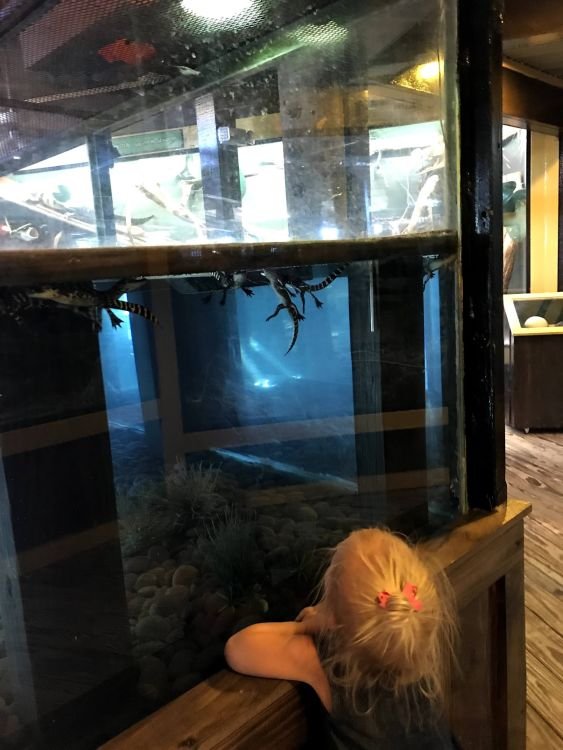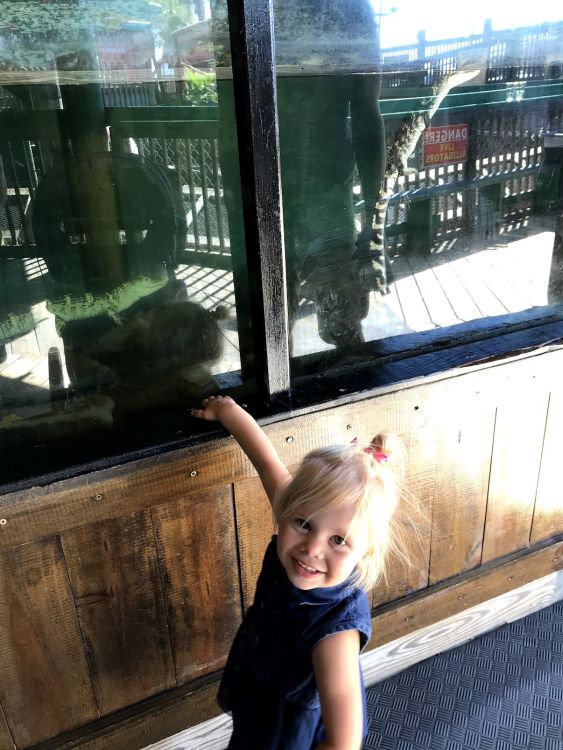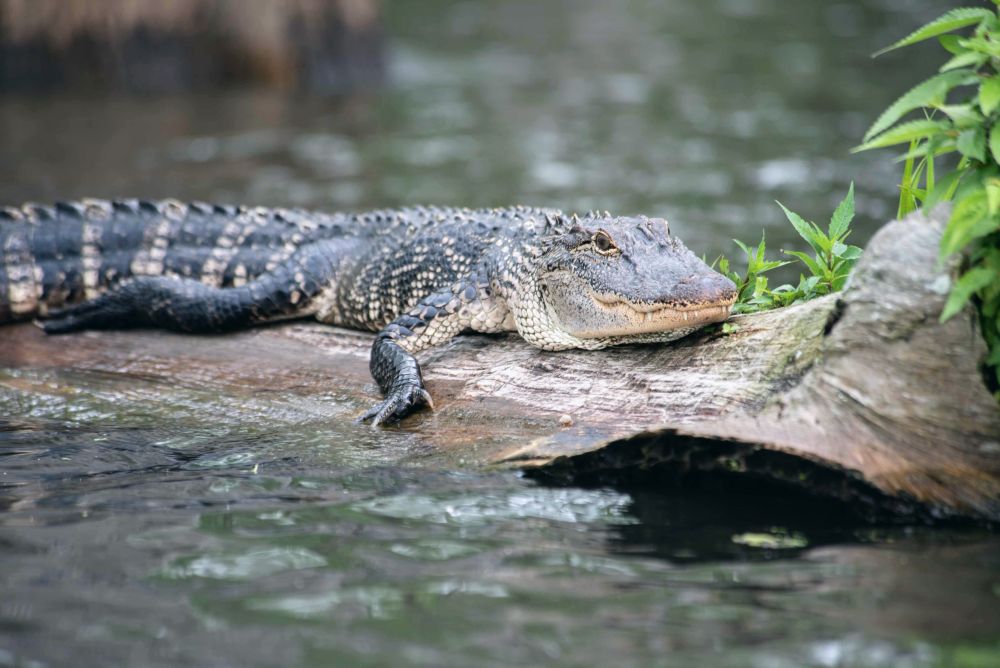That Time We Fed Alligators
Hey there, Creation Explorer!
Both Trevor and I grew up in Eastern Ontario. This beautiful corner of the world is known for many things: a multitude of lakes, great fishing, lots of migratory birds, and even the occasional moose. But it’s not known for large reptiles, so neither Trevor nor I had ever really encountered a six-hundred-pound reptile until we visited Florida!
In the fall of 2020, we took our first family trip from our home in Kentucky to the panhandle of Florida to explore the coastline. While we were there, we stopped at a restaurant with an interesting draw for tourists—real live alligators. And lots of them!
This restaurant had full-grown American alligators swimming in a pond and babies of various sizes, from hatchlings to “teenagers,” in tanks scattered across the grounds. You could even pay to put some food on the end of a fishing rod and tempt the alligators to stop sunning themselves and jump up for a bite to eat. It was a really neat experience, and Winston, Felicity, and Lois loved it.
American alligators are found in the southeastern United States, particularly in Florida and Louisiana. They nearly went extinct in the 1960s, but recovery efforts soon brought them back. Now over a million of these large reptiles call swamps, marshes, ponds, and rivers home.
God designed these reptiles for a life in the water. Webbed feet and a powerful tail propel them expertly and quickly through the water. Their raised eyes and nostrils allow them to see above the water and breathe while remaining nearly invisible to a passerby along the shore. This makes them excellent ambush predators in our fallen world (in God’s original creation, they would have been vegetarian, and some alligators still enjoy eating fruit).
Did You Know?
You can tell the difference between an American alligator and a crocodile by looking at their snout. A croc’s teeth stick out from its mouth in a toothy grin; a gator’s teeth are all hidden inside its mouth.
Far from being merely a fearsome predator of the Everglades, alligators are considered a keystone species. This means they help keep their environment stable for many other species. In other words, they’re very important to the other species that live in their area!
Here’s why: alligators like to dig down into the mud and create small ponds called alligator holes. These alligator holes remain filled with water, even during the dry season. This provides an important habitat and water source for various creatures from fish to turtles to birds to mammals (some of which become a snack for a waiting gator!).
Due to the wide variety of creatures alligators consume, they’re also helpful in keeping certain invasive species populations like the Burmese python from spreading too far. For example, alligators eat nutria, a semi-aquatic rodent that overgrazes aquatic plants that stabilize the soil and provide important shelter for baby fish and invertebrates. They also provide protection to nesting birds by eating predators that try to prey on eggs and chicks.
Alligators are an amazing part of God’s creation, and we enjoyed meeting them from behind a fence!
Well, we’re off on another adventure. Until next time, remember Colossians 1:16, which reminds us that all things were created by our Lord and Savior, Jesus Christ: “For by him all things were created, in heaven and on earth, visible and invisible, whether thrones or dominions or rulers or authorities—all things were created through him and for him.”
P.S. Join us on our exploration of Florida’s coastline in “Habitats,” part of season one of our show, Schus Off!, now streaming on Answers TV. Ask your parents to help you try a free seven-day trial at Answers.tv.
- © 2025 Answers in Genesis
- Privacy Policy
- Contact
- About

